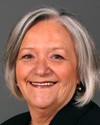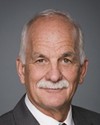Thank you very much.
Members of the committee, Madam Chair, thank you for giving me an opportunity to speak to you today.
I have with me today two individuals whom you've no doubt met before: Michelle d'Auray, the chief human resources officer at the Treasury Board Secretariat, and Marc O'Sullivan, the acting senior vice-president of the workforce and workplace renewal sector, office of the chief human resources officer.
As you know, our government is committed to official languages, and we have made many efforts to ensure Canadians fully benefit from linguistic duality and its advantages.
As the President of the Treasury Board, I am responsible, first, for ensuring that Treasury Board develops and coordinates federal principles and programs for the application of the parts of the Official Languages Act dealing with delivering services in both official languages at offices designated as bilingual, in accordance with the Canadian Charter of Rights and Freedoms. That's in part IV of the act.
Second, I am responsible for creating and maintaining work environments that are conducive to the effective use of both official languages in regions designated as bilingual for language of work purposes. That is in part V of the act.
Third, I am responsible for ensuring the equitable participation of members of both official language communities in federal workforces and equal employment and advancement opportunities for both communities in federal institutions. That is part VI of the act.
Complementary to the efforts of my colleague, the Hon. James Moore, Minister of Canadian Heritage and Official Languages, I also play a role in applying part VII of the act in institutions. Specifically, I ensure that initiatives that Treasury Board is asked to approve take into account the enhancement and development of official language minority communities.
In addition, at the end of each fiscal year I am responsible for tabling in Parliament a report on the official languages program in institutions that are subject to the act.
I know that the Commissioner of Official Languages has expressed concerns about the creation of the office of the chief human resources officer. I would like to clarify this issue for the committee members.
As you know, on February 6 the Prime Minister announced a new human resources governance structure that provides for the creation of the office of the chief human resources officer within the Treasury Board Secretariat. The new office was established on March 2, 2009, by combining the functions of the former Canada Public Service Agency and the sectors within Treasury Board Secretariat responsible for pension, benefits, labour relations, and compensation.
In terms of official languages, the mandate of the office of the chief human resources officer includes providing support for institutions subject to the act to help them achieve their official languages objectives. Let me be clear: the restructuring has not in any way changed my responsibilities, nor those of the Treasury Board. The office of the chief human resources officer has the same responsibilities with respect to official languages as the agency had.
I would also like to recognize 2009 as the 40th anniversary of the Official Languages Act. Let me mention a few key achievements.
First, slightly over 90% of official language minority communities have access to federal services in their language. If we think back to 40 years ago, when communities had to communicate with federal institutions in the language of the majority, this is incredible progress. In 40 years we have gone from a practically unilingual public service to a bilingual public service in which employees can generally use the official language of their choice at work, subject, of course, to obligations relating to services to the public, other employees, and the supervision of employees. The percentage of bilingual positions increased from 25% in 1978 to 40% in 2007.
Linguistic duality is a cornerstone of our national identity and a source of immeasurable economic, social, and political benefits for all Canadians. Our government is committed to strengthening this duality. Our road map for Canada's linguistic duality for 2008-2013 includes an unprecedented five-year commitment to provide $1.1 billion in funding in support of the road map and is a sign of this commitment.
As our Prime Minister said, and I quote, the road map:
...reiterates the commitment of the Government of Canada to linguistic duality and our two official languages. It lays out the path we intend to follow over the next five years to build on Canada's sturdy foundations. English- and French-speaking Canadians have come a long way together since the founding of Quebec City.
This Roadmap points the way to an even stronger future and a more unified Canada.
Additionally, our government has a centre of excellence for official languages within the Treasury Board Secretariat, which will continue to be a leader and closely monitor official languages developments in federal institutions. This centre of excellence is working on including official languages in each of the four priority areas for public service renewal: first, integrated human resource planning; second, recruitment; third, employee development; and fourth, enabling infrastructure.
I would also like to point out that one of the objectives for 2009 is to continue recognizing the place of Canada's two official languages in the workplace. Overall, the situation is positive. According to the 2005 public service employees survey, 86% of employees feel free to use the official language of their choice when they prepare written materials; 90% of employees feel free to use the official language of their choice when they communicate with their supervisors; 85% of employees feel free to use the official language of their choice during meetings in their work units; and 93% of employees say that the material and tools provided for work are available in the official language of their choice.
In closing, linguistic duality is a major asset for both the public service and Canadians. Canadians need a modern public service that provides services in both official languages and is representative of the various communities making up Canadian society.
So, Madam Chair, my officials and I are happy to take your questions. Thank you.




